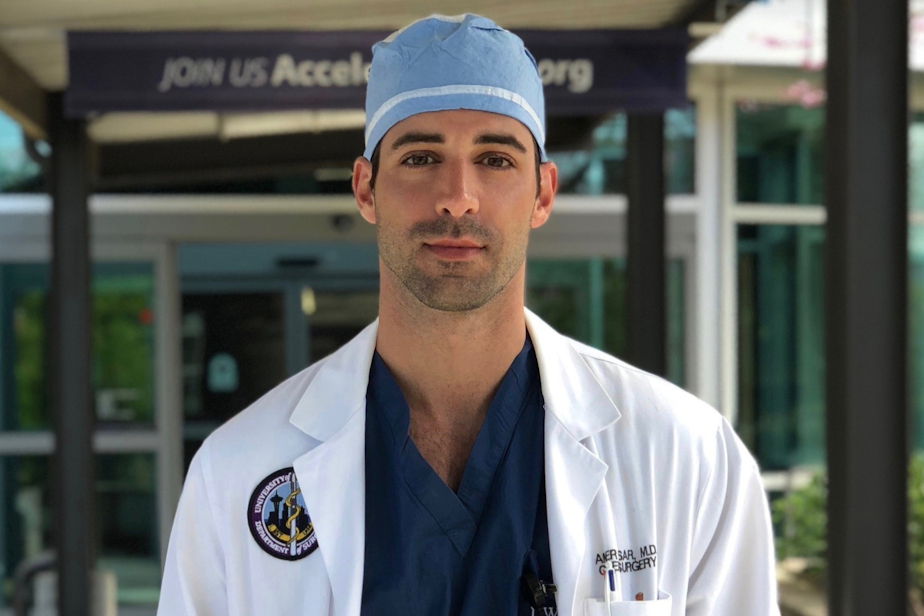I'm a surgeon in Seattle. A bleeding trauma patient amid the coronavirus pandemic was my nightmare

Voices of the Pandemic features people in the Seattle area who are on the frontlines of the coronavirus outbreak.
Dr. Amer Nassar is a general surgery chief resident with the University of Washington. Surgeons may be less likely to see Covid-19 patients, but that doesn’t mean the pandemic hasn’t changed how they’re doing their jobs. Nassar takes us through his dealings with coronavirus.
Before the shift
It's now 5 in the morning, and I'm on my way to the hospital where I'll be the chief resident on call for all traumas coming from Washington, Wyoming, Alaska, Montana and Idaho.
Although the pandemic hasn't led to surgeons taking care of many Covid patients, it has still affected us in many ways.
I was part of the surgery team that did the first trauma operation on a Covid patient in the state of Washington.
Sponsored
He was a young man who had a gunshot wound to the neck and face. I remember at first being frustrated with the protocols of having to treat every intubated patient as a Covid rule out, but then realize this was for our own protection.
It meant taking extra measures, operating in masks that make it hard to breathe, or full face covers akin to spacesuits. It meant longer to get the patient into the operating room and less help in the operating room to minimize the number of staff in contact with potential Covid patients.
What would happen if this patient was a different type of trauma? One who was bleeding to death, for example. Would these protocols lead us to fail our patients by causing too much delay?
I've been thinking about this nonstop for the past two weeks, since that first case, during every 5 o'clock morning drive into work.
That particular case went as good as it possibly could, being the first one, and the early implementation of these protocols prevented the exposure of countless healthcare providers in that one particular case.
Sponsored
After the shift
It's now 7:30 in the evening and I just got home after a 14-hour shift.
Well, my initial nightmare of having a bleeding trauma patient has come true.
The call came in from another hospital, transferring a young man who was in a car crash. He was bleeding internally from multiple organs and was very sick despite getting multiple transfusions.
He was arriving at our doorstep in 30 minutes.
Sponsored
We huddled as a surgery team, then with the emergency room team, then with the operating room team, and finally we huddled with the anesthesia team.
A plan was in place, but still my fears of not getting him into the operating room fast enough with all the Covid protocols lingered in the back of my mind.
When he arrived, it was a smooth transport from the emergency department down to the operating room front desk. From there, only minutes into the operating room itself.
A life was ultimately saved thanks to multiple teams working together.
"Wow," I thought. "We've come such a long way in just a short few weeks."
Sponsored
I went home that night and for the first time in two weeks, I wasn't nervous about going to work the next day.
We're collecting short, first person stories for our series Voices of the Pandemic. We'd love to hear about a moment or decision you faced recently, maybe something that shows how you're experiencing this crisis. Reach reporter Kate Walters via email at kateo@kuow.org.
Producer Alec Cowan composed music for this story.




